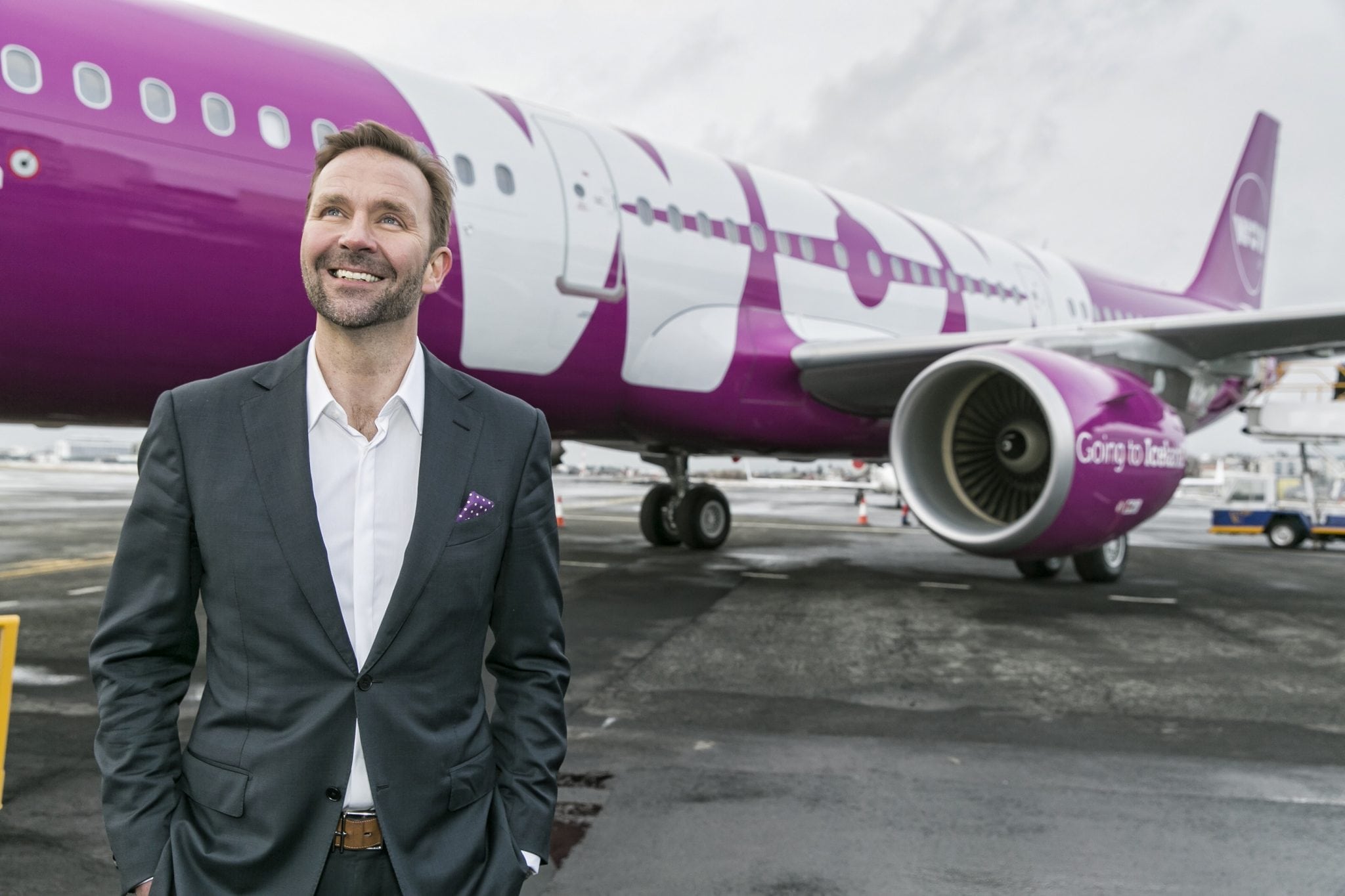Skift Take
It might not happen immediately, but look for Wow Air to eventually expand into Asia. There are no sure things, but the model should work in Asia, too. Who doesn't like low fares?
Iceland’s Wow Air has fewer than a dozen aircraft, but founder and CEO Skúli Mogensen is thinking big — and he’s looking at Gulf airlines for inspiration.
“Should we try to become the Dubai of the North?” he asked during a recent interview with Skift.
It is not as far fetched as it sounds. Before Emirates’ founding three decades ago, Dubai was known globally for little more than its hot temperatures and oil reserves. But Dubai has something other cities do not — a central global location that makes it a convenient connecting point for travel between Europe and the United States and the Middle East, India and Africa. Dubai’s geography, combined with heavy government investment, both in the airline and airport infrastructure, is a major reason Emirates has succeeded.
Wow Air may not have Dubai-type oil reserves, but it does have an advantageous location. Icelandair has long capitalized on the country’s North Atlantic position to offer seamless connections between the North America and Europe, and so far Wow Air has followed a similar strategy, connecting cities like Baltimore and Boston with Paris and Barcelona.
But for five-year-old Wow Air, there’s more to it. Because it is located so far north, Keflavik International Airport is a relatively convenient stopover for Americans and Western Europeans heading to Asia.
“Dubai is really a connecting point between Africa, Asia and the Middle East, and of course outer Europe as well” Mogensen said. “We are perfectly located between Asia, North America and Europe.”
He has sketched out how an Asia expansion could work. Any flight to Beijing would probably initially fly north, then cross over Russia. From Iceland, a widebody aircraft could fly to China and back in less than 24 hours, likely with value-seeking American and European passengers onboard. European travelers would have to backtrack slightly, but not by so much as to make it inconvenient. Some passengers likely would create a mini-vacation in Iceland, while others would fly straight through.
“It’s an optimal route because you can get more flight hours through your investment,” Mogensen said of Beijing.
Sometimes routes lose money in early years, as airlines look to build awareness for a new product. But Mogensen argues Wow Air has developed a strategy that insulates it from most of the struggles new entrants usually face. He noted that Wow Air was quickly profitable in North America, despite having little name recognition outside of Iceland and Europe and no U.S. partner airlines. Wow Air did not start flying to North America until Spring 2015, when it launched Boston and Baltimore. It added Toronto, Montreal, Los Angeles and San Francisco earlier this year, and will expand to Newark in November.
The key to quick profits, Mogensen said, is to mostly ignore traditional distribution channels and focus on “using the internet [and] using social media,” as well as leveraging “modern distribution tactics, modern media tactics [and] modern Google ad optimization tactics.” He acknowledges discounting helps, too. (Wow Air has earned considerable free U.S. media exposure by offering $99 one-way fares to Iceland and $149 fares to Europe.)
Presumably, if Wow Air started flying to Asia, more passengers would find it. Unlike airlines of another era, Wow Air likely would not have to rely on travel agents, or even global distribution systems.
“If we would go into Africa, our model might not work because you don’t have the internet penetration, you don’t have the phones, you don’t have credit cards,” said Mogensen, a serial entrepreneur who in 2008 sold his mobile software company to Nokia, “For North America, for the western developed world, large parts of Asia, I’m sure we can go in using the exact same model.”
Still, Asia might be more of a long-term approach for Wow Air, which for now has only three widebody aircraft and flies no farther than California. In the near term, the airline may add more U.S. routes.
Expanding in the United States comes with little risk, Mogensen said. A profitable U.S.-European hub usually requires scale, requiring an airline to serve many destinations on each side of the Atlantic, giving customers choice.
In a short time, Mogensen has already created this scale, making each new flight Wow Air a little less uncertain. If, for example, Wow Air added Chicago, the ailrine would not just launch the new route to fly Midwesterners to vacation in Iceland. Instead, Chicago-based travelers could connect to about 20 European destinations, including Berlin, Amsterdam, Warsaw, Copenhagen and Barcelona. Those connecting options make it a lot easier for Wow Air to sell its flights.
“We are coming to a science finally where it’s relatively easy for me to add any new destination, because I’ve got so many American points,” Mogensen said. “I feel pretty good about where we are today, because I can see everything is working. That, again, allows us to add three, four more U.S. destinations because I’ve got all this feed into Europe.”
The Daily Newsletter
Our daily coverage of the global travel industry. Written by editors and analysts from across Skift’s brands.
Have a confidential tip for Skift? Get in touch
Photo credit: Wow Air CEO Skúli Mogensen is evaluating whether the Icelandic carrier should start new Asia routes. Wow Air
